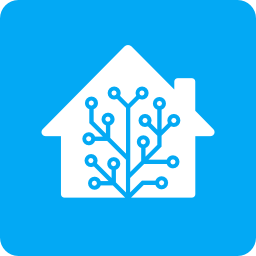I have had around a dozen smart bulbs/switches/plugs from three companies for 5-10 years now. Globe Suite, Meross, and ‘C by GE’ (General Electric). All three are dependent on their respective cloud services, and are integrated with Google Home. (I know, I know… It’s time to dump this crap, it’s why I’m here) Globe Suite has been great tbh, but ‘C by GE’ is absolute trash, and one of the two Meross devices have now died, prompting a long awaited change.
My big sticking point is knowing where to start with hardware. I don’t know much about the different communication protocols/methods or what to choose (zigbee? Z-wave? Do I need some sort of Hub? Can/should I just use a wifi connection like the current setup? 🤷), and I don’t really know where to look to purchase smart devices that aren’t cloud dependent. (buying from Canada)
Funds are tight so this’ll be an over time project. For now I’m looking to replace three switches. One single pole. One 3-way. Ane one dimmer. Neutral wires are available at all three locations.
Later I’ll be looking to replace 3 smart plugs. Adding current/power monitoring would be neat, but definitely not a priority as I have an Iotawatt at the pannel. After that 4 dimmable white light smart bulbs. Finally there’s an RGBW LED controller that’ll need replacing. The plugs, bulbs, and leds are all Globe Suite; I’m not in a major hurry to replace them as they’ve given me next to no trouble compared to the other two companies garbage.
Where do I start? Where do you guys buy hardware, and what manufacturers?
What should I be looking for in hardware I can integrate with HA and essentially firewall off from the internet?
Finally, how about things like sensors? (weather, motion, moisture, sound)
The next week or so I’ll fire up an HA container just to poke around a bit more. That part I’m pretty confident in, it’s just figuring out some hardware to go with it. Thanks for any advice :)


HomeAssistant will run on a Raspberry pi just fine but don’t expect to run a bunch of add-ons that way and things like Frigate with a few cameras will not work very well. So if you are not sure what you will be running in the future a mini pc is a good idea then you can install most any add-ons you like. The only thing you will need to pickup is a USB adapter for zigbee, z-wave, matter, or Bluetooth and if you decide to run cameras a Google Coral for object detection. You can run HomeAssistant using Docker however you will need to manage this much more than using HAOS. Unless you really want to deal with nitty gritty stuff you will lyrically want to use the HAOS version, https://community.home-assistant.io/t/home-assistant-installation-methods/207703
While HomeAssistant has features for automatically doing things you will probably want to install NodeRed for more complex automations. It’s well worth it especially if you want something randomized. I use it to select my porch RGB LED strip sequences randomly as well as my RGB LED address light sequence. They come on automatically at sundown and change or turn off at specific times throughout the evening. The porch strip changes to a bright white when a motion sensor is triggered or when a tracked device comes into the home zone.
I started of using 100% wifi based this and built all of my sensors based on ESP8266’s and ESP32’S using ESPHome. I’ve recently started adding zigbee since flashing stuff over is getting more difficult/nearly impossible outside of a few wifi based devices. I actually started using Sonoff ZBMINIR2’s for switches and plugs, the “switch” legs on the ZBMINIR2 can accept high voltage but when wired through a switch alone they are only 5v dc so I’ve used a couple to make in line cord switches with some simple push buttons in a hobby box for some lights I have. I’ve also installed them in receptacle boxes and turned a single outlet into a zigbee switched one. I’m using a sonoff zigbee dongle-e with ZHA as my coordinator and so far is been working perfectly.
Adding a zigbee device using ZHA is as simple as opening up HomeAssistant going to the settings/devices/zigbee and clicking on add device. Set the name and location and you are done unless you need to change a setting in the device. The ZBMINIR2’s by default are setup to work with toggle switches but can be used with intermittent pulse buttons as well by just changing a setting for the particular device.
My RGB LED strips are controlled using ESP32’s and WLED. My front porch strip is u hay under 1500 individual pixels and my address numbers are about 100.
I currently track my power usage with ESPHome on an ESP32 with CircuitSetup’s split phase energy meter kit. But hopefully in the next couple months I will have an Enphase system in place that will handle the majority of that along with solar production. I also have a simple water meter with a pulse output connected to an ESP8266 that feeds data into HomeAssistant as well.
If you are looking for premade sensors you can find a ton of different ones that are available for zigbee or z-wave but if there is something special you want search what ESPHome supports and add them in. I actually track vehicle battery voltage at home using an ESP8266 and ESPHome.
One of the potential issues if you live in town with a lot of WiFi AP’s around you is that some of the zigbee channels can overlap with WiFi frequencies in the upper 2.4ghz range (channel 11 mainly) so that can cause some issues with stuff that is further from your coordinator, however many zigbee devices when hooked to mains power will also act as relays so it’s simple enough to add a ZBMINIR2 to a switch at an in between point. I’ve honestly never had an issue and I run multiple WiFi AP’s in my own home and have neighbors with a couple routers. Z-wave is not the same but I believe the devices run a bit more and z-wave is a part of the matter/thread ecosystem and has a much longer range (up to 800 meters) but runs slower as it’s in the 900mhz range. I highly suggest taking a look at the protocols and compare them for your particular needs https://en.wikipedia.org/wiki/Z-Wave#Comparison_to_other_protocols
A small note about long range wireless signals. Having something that can operate 800 meters away since great, but remember there will be someone who also thinks it may be fun to try and hack stuff and the further your signal reaches the more chances it will be spotted. Years ago I used to encourage people to secure their ap’s by changing the SSID to something very colorful and change the passwords.